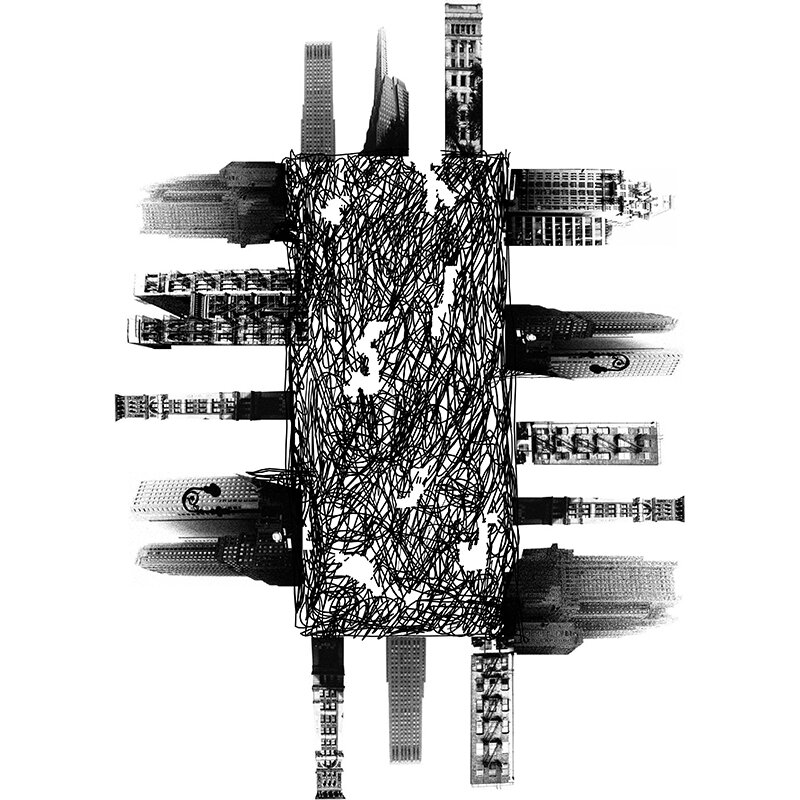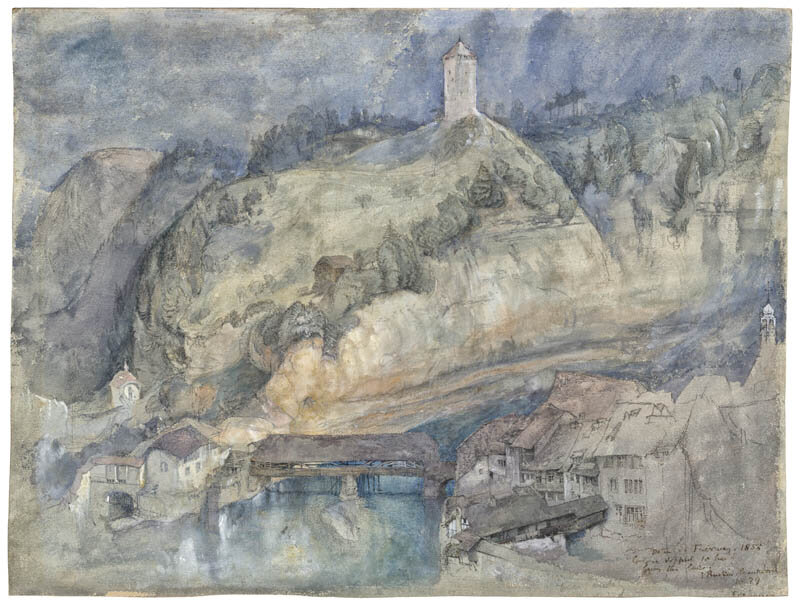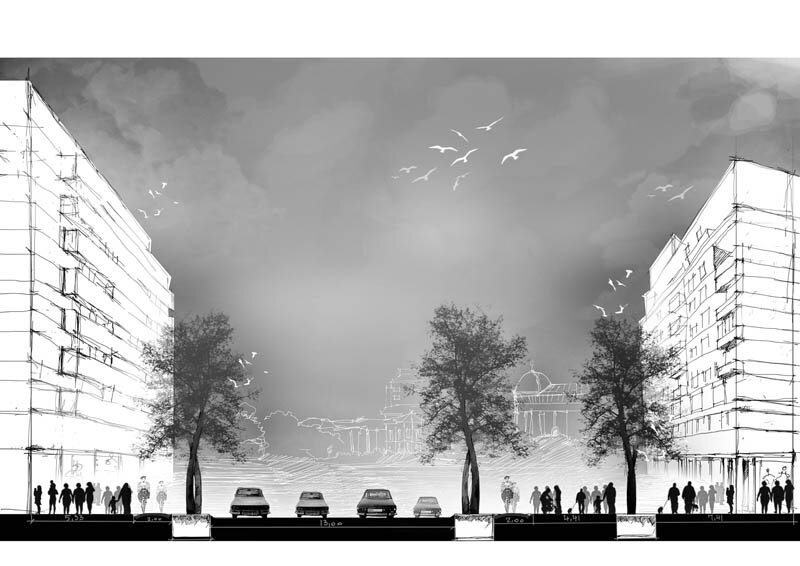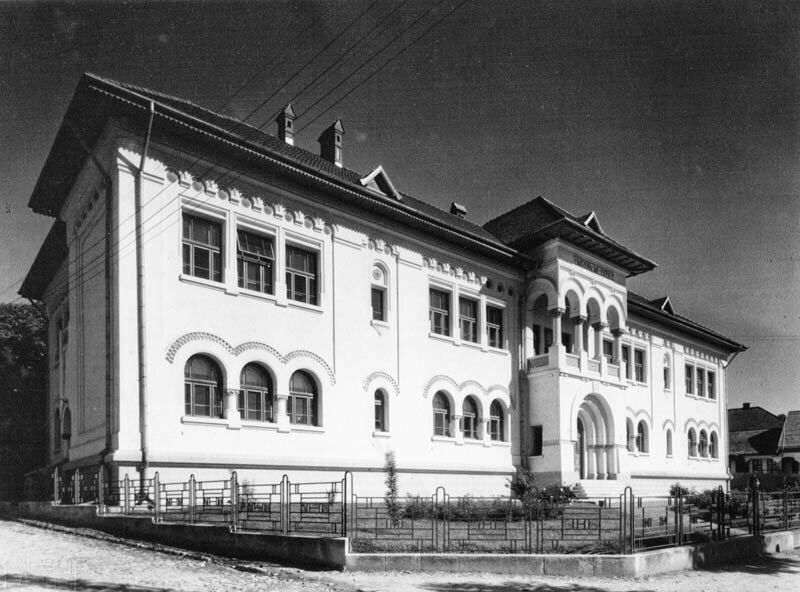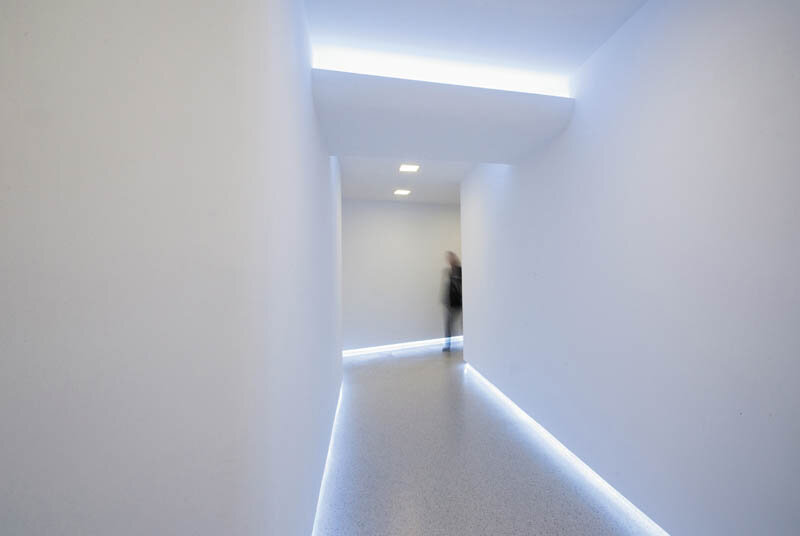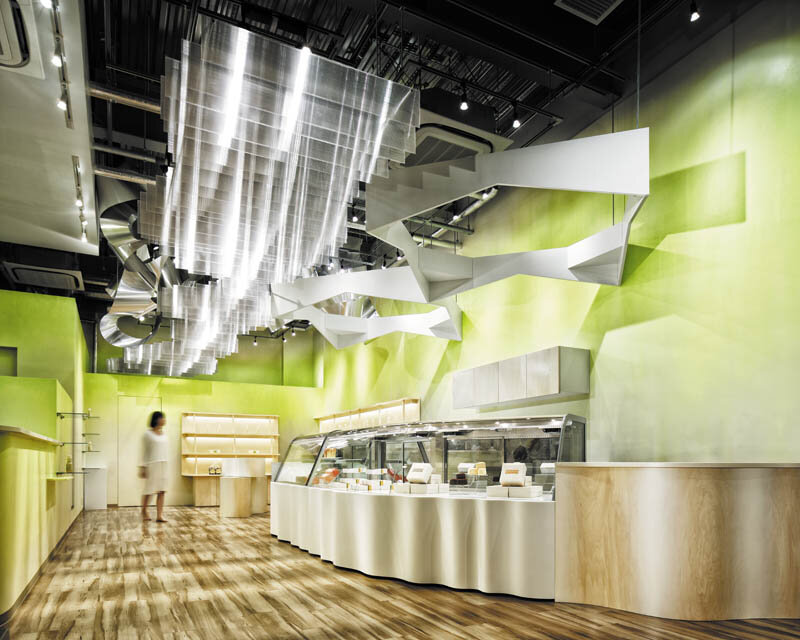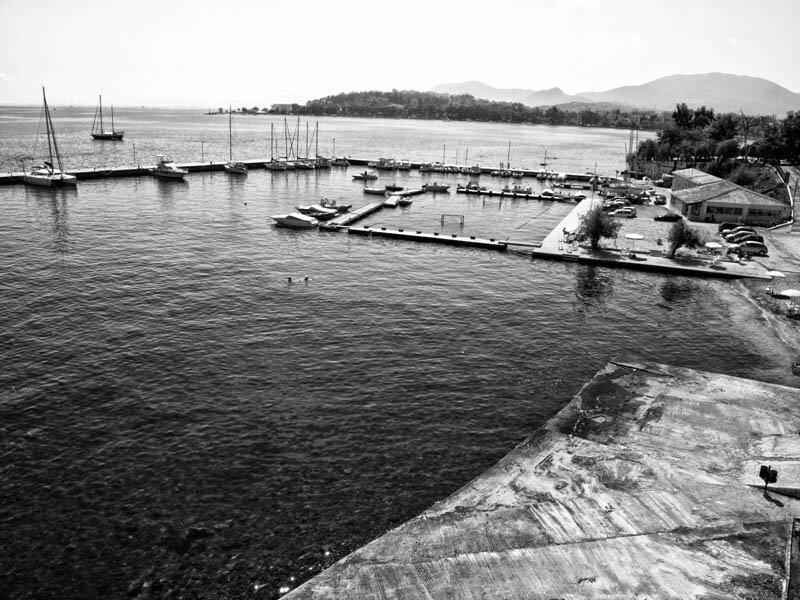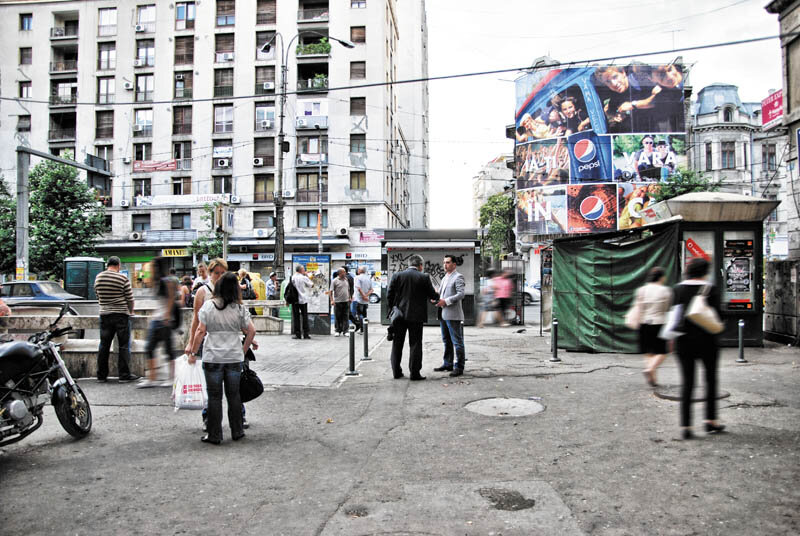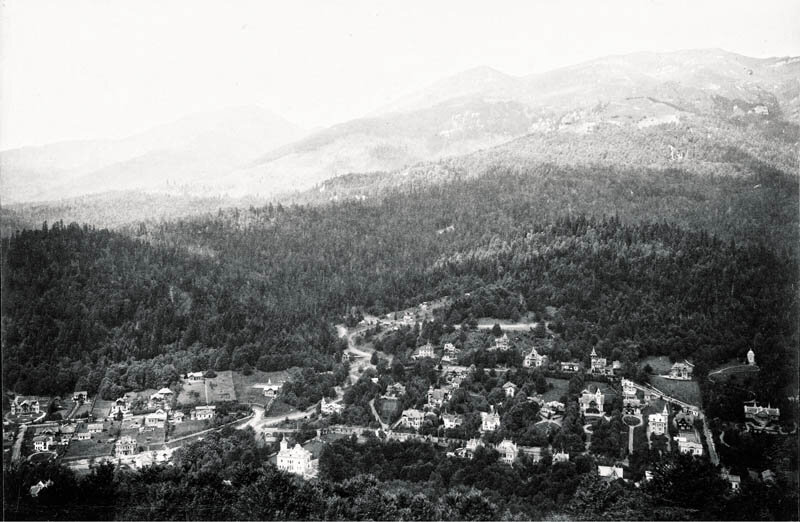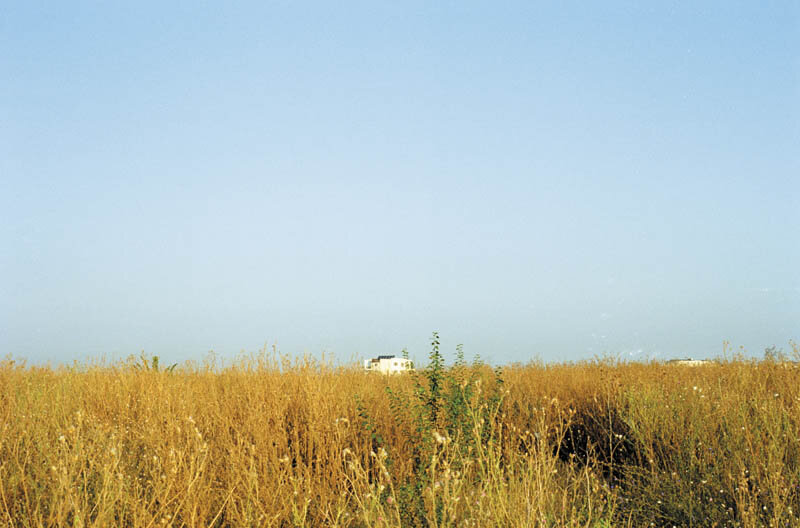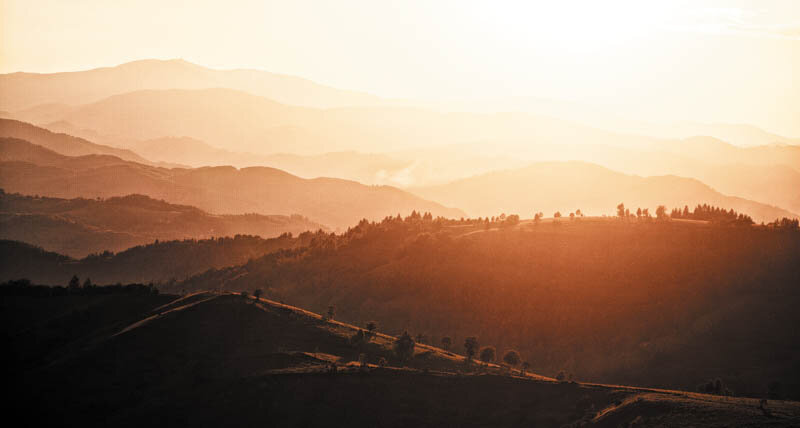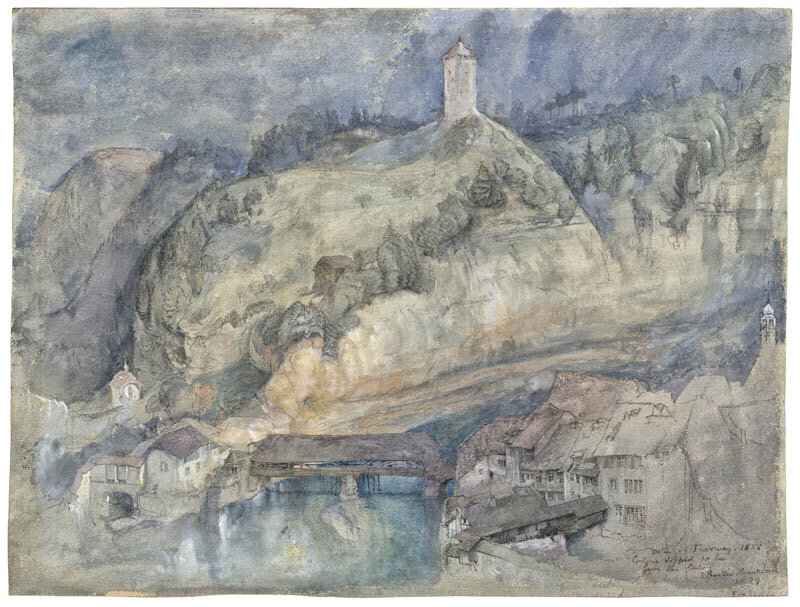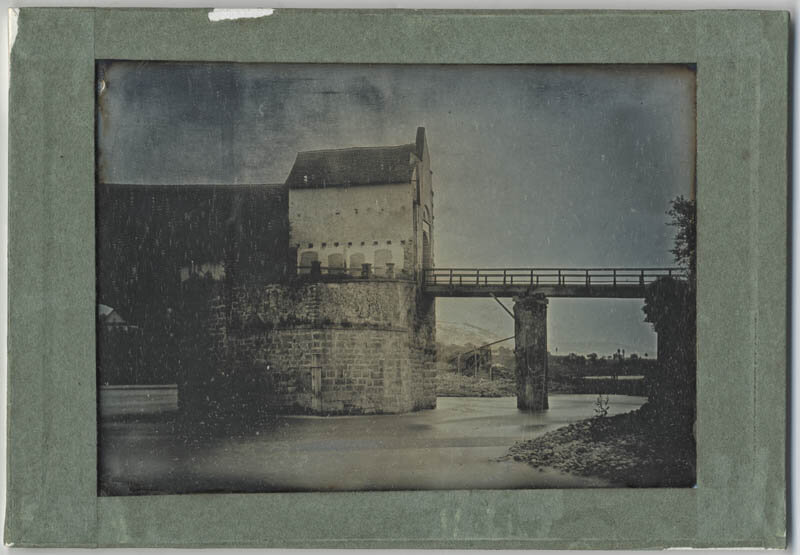
John Ruskin: landscape and democracy
Landscape and democracy
| John Ruskin, author of Modern Painters, was an aesthete, geologist, naturalist and moralist. He was interested in landscape as a special theme in art and as a force for good or evil. Around 1850 he tried to establish an association between landscape and democracy. In the fifth volume of Modern Painters, written in 1859, he identified what he considered to be the source of Europeandemocracy : the land of Helvetia, whose "narrow domain should be marked with a small green dot on every map of Europe". That area stretches south of Lake Luzern, mainly in the canton of Uri, and measures about sixty square kilometers. The cool winds blowing from the north were not favorable for grape-growing, forcing the locals to turn to a pastoral existence. Ruskin's presumption was that pastoral life went hand in hand with democracy. According to Ruskin, shepherds were people endowed with practical thinking and a great deal of common sense. Ruskin wrote widely and widely and did not always check his assumptions. He tended to illustrate with pictures and examples, and in this case he made his case with a diatribe against the unsuitable landscape of Sion in the Valais, not far south-west of Canton Uri. Sion was in the wrong place, a steep valley running east and west, which meant that one side was permanently shaded while the other was eternally scorched by the sun. In such an area plagued by landslides, raging torrents and standing water, people's lives were lived in pretty precarious conditions. The demoralized people of Zion had erected rickety buildings of rough limestone and spoiled them with false facades that had fallen over time, leaving behind houses peeling and riddled with sores. Zion's landmarks were a dark castle, two old churches, a monastery and a bishop's palace, described by Ruskin as "a practically abandoned shanty-like building" overlooking a "neglected vineyard, whose clusters, black on the inside and snow-white on the top from the limestone dust, gather around them innumerable swarms of flies buzzing melancholy". Ruskin's method was to scan a landscape for its symbolic content. Black grape bunches on one side and white on the other satisfied his taste for extremes. The idealized land of Helvetia, for example, was remarkable only by comparison with dystopian Zion. The neglected vineyard, a phrase written in italics in the original text, must have reminded him of some famous vineyards that had once existed, notably that of Naboth the Israelite who was stoned to death at Jezebel's instigation (I Kgs.21.15). In Christ's parable (Mk.12) another vineyard is planted by a man who sets out on a journey to a distant country, leaving behind servants to tend it. When this man (God) sends his messengers to see how things are going and to ask for rent, quarrels arise. This reference to the neglected vineyard was Ruskin's way of invoking the shortcomings of private property and extolling the pastoral custom of shepherds negotiating among themselves for access to common pasture. What also catches our attention in this very short excerpt is the phrase 'the shanty-like building', in which Ruskin signals the evils caused by past and future centralization in both the sphere of the established church and the recently emerging manufacturing industries. |
| Read the full text in Arhitectura 5/2013 |
| John Ruskin's Modern Painters appeared in five volumes, published between 1843 and 1860. The description of Sion (Valais) appeared in volume IV, 1856, subtitled On the Beauty of the Mountain , and was included in the nineteenth chapter, entitled The Sadness of the Mountain. His eulogy of Helvetia may be found in volume V, subtitled On the Beauty of Leaves - On the Beauty of Clouds - On Ideas of Relation. It was included in chapter IX, The Shadows of Leaves . His account of the misrepresentation of Switzerland on the stages of London and Paris is to be found in The Sadness of the Mountain. Most of Ruskin's works on Switzerland were written around 1850. Most of his daguerreotypes can be found in the collection at the Ruskin Library and Research Center at Lancaster University. For a particularly interesting account of Ruskin's life, work and art see Wolfgang Kemp, The Desire of My Eyes: The Life and Work of John Ruskin, Farrar, Straus & Giroux, New York, 1990 (originally written in German as John Ruskin: Leben und Werk, 1819-1900 , Carl Hanser Verlag, Munich, 1983). |
| John Ruskin, author of Modern Painters, was an aesthete, geologist, naturalist and moralist. He was interested in landscape as a subject in art and as a force for good and ill. Eventually, in the 1850s, he tried to associate landscape and democracy. In the fifth volume of Modern Painters, written in 1859, he identified what he considered to be the source of European democracy, the land of the Helvetii whose "narrow domain should be marked by a small green spot on every map of Europe". The area in question lay along the southern edge of Lake Luzern, mainly in Canton Uri, and measured around sixty by sixty kilometers. Cooling winds from the north meant that the land was unsuitable for vine growing, which forced local people to depend on pastoralism. Ruskin's assumption was that pastoralism was compatible with democracy. Shepherds, according to Ruskin's account, were practical thinkers well supplied with common sense. Ruskin wrote pell-mell and didn't always take time to substantiate his claims. His tendency was to deploy images and examples, and in this instance he furthered his case with a diatribe on bad landscape centered on the town of Sion in the Valais, not far to the south west of Canton Uri. Sion was in the wrong place, in a steep valley running east and west, which meant that one side was in constant shadow whilst the other was scorched by the sun. In such an area, subject to landslides, raging torrents and stagnant waters, livelihoods were precarious. The demoralized population of Sion had built badly using coarse limestone fronted by false decoration that had fallen away, leaving the houses peeled and scarred. Sion's landmarks were a dark castle, two old churches, a convent and the Episcopal palace, described by Ruskin as "a half-deserted, barrack-like building" that overlooked "a neglected vineyard, of which the clusters, black on the under side, snow-white on the other with lime-dust, gather around them the melancholy hum of flies". Ruskin's way of doing business was to scan a landscape for its symbolic content. The clusters of grapes, black on one side and white on the other, answered to his taste for extremes. The idealized land of the Helvetii, for example, although admirable was only remarkable in relation to dystopian Sion. The neglected vineyard, italicized in the original text, must have reminded him of famous precursor vineyards, especially that of Naboth the Jezreelite who was stoned to death at the instigation of Jezebel (I Kgs.21.15). In Christ's parable (Mk.12) another vineyard is set up by a certain man who goes into a far country leaving servants in charge. Squabbles ensue when the certain man (God) despatches messengers to ask for reports and rentals. This mention of a neglected vineyard was Ruskin's way of invoking the shortcomings of private property, and also a way of making good the practice of pastoralism in which herdsman had to negotiate amongst themselves for access to common grazing. The remaining element in this very short extract is the "barrack-like building", a Ruskinian pointer to the evils of centralization past and present, in the established church as in newly established manufacturing. |
| Read the full text in the print magazine. |
| John Ruskin's Modern Painters appeared in five volumes published between 1843 and 1860. The description of Sion (Valais) appears in Volume IV, 1856, sub-titled Of Mountain Beauty . It is printed in Chapter XIX, entitled The Mountain Gloom . His eulogy of the Helvetii can be found in Volume V, sub-titled Of Leaf Beauty-Of Cloud Beauty Of Ideas of Relation. It is printed in Chapter IX. The Leaf Shadows. His account of Switzerland misrepresented on the stages of London and Paris is in The Mountain Gloom. Most of Ruskin's work on Switzerland took place in the 1850s. Many of his daguerreotypes can be found in the collection of the Ruskin Library and Research Center in Lancaster University. For an especially stimulating account of Ruskin's life, writings and art see Wolfgang Kemp's The Desire of My Eyes: The Life and Work of John Ruskin, Farrar, Straus & Giroux, New York, 1990 (originally in German as John Ruskin: Leben und Werk, 1819-1900, Carl Hanser Verlag, Munich, 1983). |

